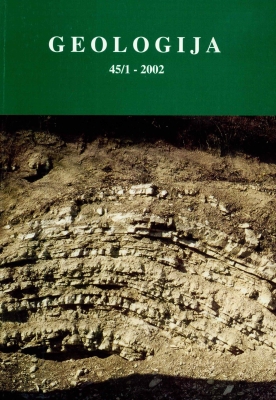Miocene to Quaternary deformation, stratigraphy and paleogeography in Northeastern Slovenia and Southwestern Hungary
DOI:
https://doi.org/10.5474/geologija.2002.009Abstract
The Mura-Zala basin was formed due to ENE-WSW trending crustal extension in the late early and middle Miocene (~19 - 11 Ma). Marine sedimentation occurred in several more or less confined depressions (half grabens), then in a unified basin. The rifting phase was probably connected to uplift and brittle-ductile deformation of metamorphic basement at the eastern part of the Pohorje and Kozjak hills. During the late Miocene thermal subsidence, deltaic to fluvial sediments were deposited. After sedimentation, the southernmost Haloze-Budafa sub-basin was inverted. Mapscale folds, reverse and strike-slip faults were originated by NNW-SSE compression during the latest Miocene(?)-Pliocene. After this folding, Karpatian sediments of the Haloze acquired magnetization. During the late(?)Pliocene to Quaternary(?), the whole Mura-Zala basin, including the folded Haloze, suffered ~30° counterclockwise rotation as a relatively rigid block. This rotation affected a wider area from Slovenia to western Hungary and northern Croatia.Downloads
How to Cite
Fodor, L., Jelen, B., Marton, E., Rifelj, H., Kraljić, M., Kevrić, R., Márton, P., Koroknai, B., & Báldi-Beke, M. (2002). Miocene to Quaternary deformation, stratigraphy and paleogeography in Northeastern Slovenia and Southwestern Hungary . Geologija, 45(1), 103–114. https://doi.org/10.5474/geologija.2002.009
Issue
Section
Articles

